
Email automation, just like nearly every other marketing channel out there, is no longer about a universal, one-size-fits-all approach. Personalization is in high demand, and customers expect to be messaged with tailored communications instead of generalistic prompts to buy.
We’re talking about behavior-based triggers, shopping journeys, and segmentation that responds to how customers actually engage with your store. AI tools help, too. You can use integrated AI solutions that help predict actions and personalize content based on those predictions.
Multiple channels are also important. Depending on your niche and audience, you may want to add SMS and WhatsApp channels alongside email campaigns to reach your customers. In short, there are many things to consider before choosing the best email automation tool for you.
We’re about to break down the tools in more detail so you can confidently choose the one that reflects your needs best.
The Best Email Automation Tools in 2025
1. Omnisend
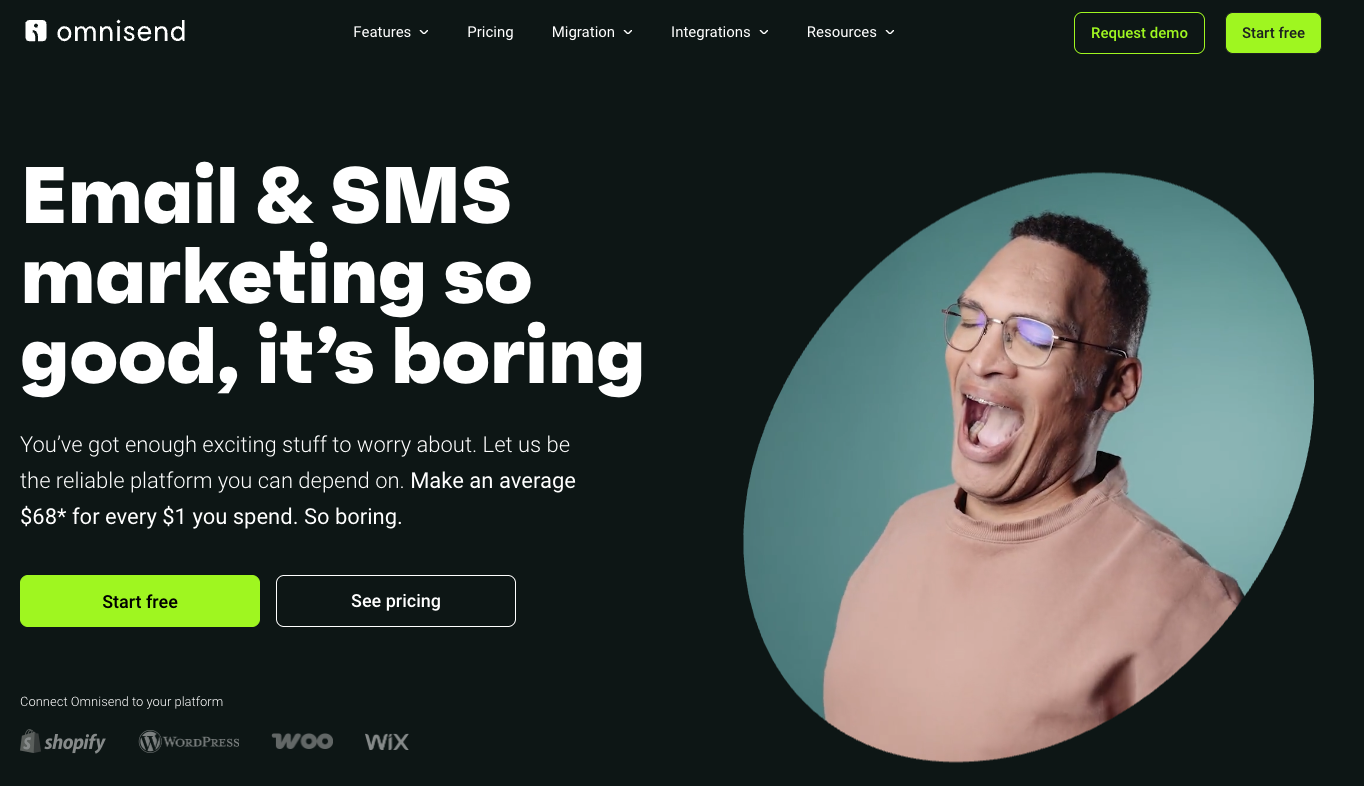
Omnisend is tailored for ecommerce stores that operate on Shopify, BigCommerce, WooCommerce, or any other major platform. It also provides email and SMS campaigns under one roof.
Standout Features
- Prebuilt ecommerce workflows (welcome, cart/browse abandonment, post-purchase).
- Product pickers and discount blocks.
- Strong segmentation capabilities.
- AI-powered subject line generators and writing assistants.
Channels and Integrations
- Email and SMS.
- One-click Shopify sync and templates.
- Integrates with most major ecommerce platforms.
Omnisend allows even non-marketing people to set everything up and get email automation running very quickly, especially if you’re using prebuilt templates.
2. Campaign Monitor
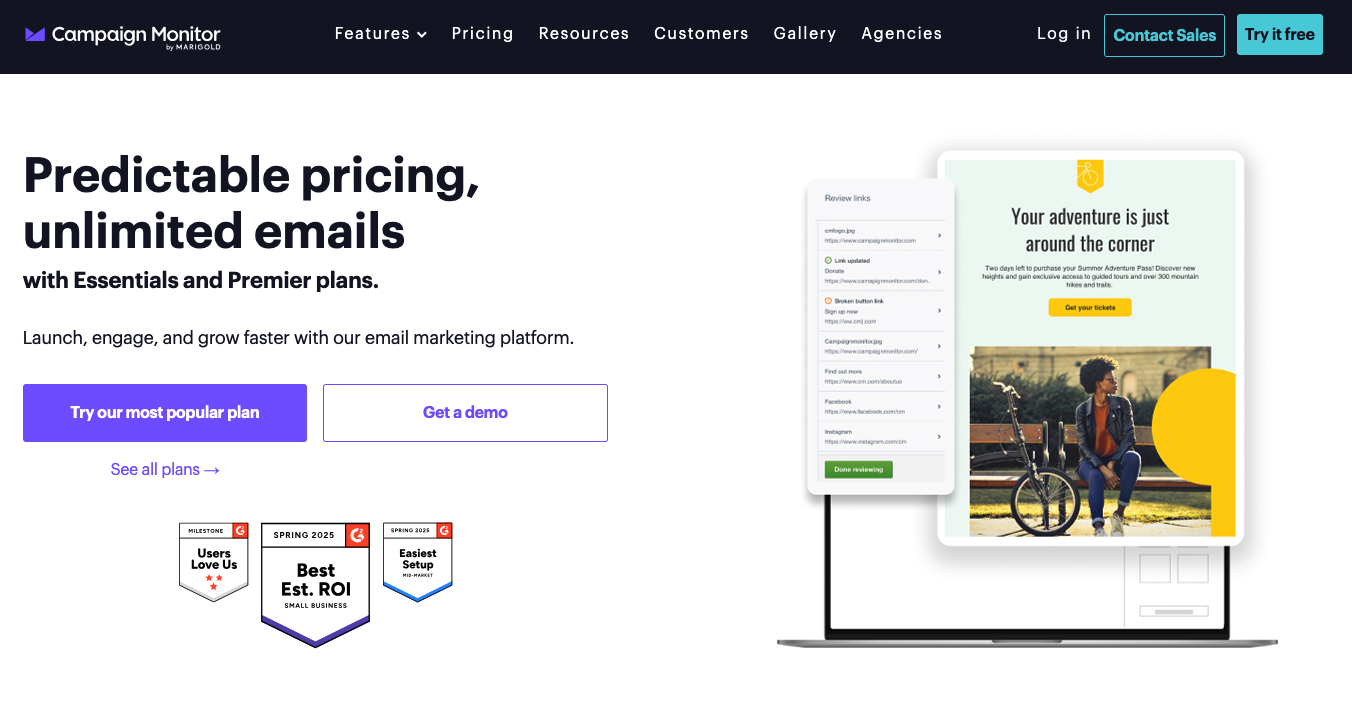
Campaign Monitor is best for small and mid-sized businesses, nonprofits, and teams focused on delivering polished emails with straightforward automatization.
Standout Features
- Visual Journey Designer with triggers, delays, conditions, and goal steps.
- Prebuilt journey templates (welcome, re-engagement, post-purchase).
- Allows you to go live with emails fast.
Channels and Integrations
- Email core with personalization and dynamic segments.
- Integrations via apps and Zapier.
- Supports transactional and scheduled sends.
Campaign Monitor has a clean design interface that’s easy to use and navigate. It’s a dependable option for teams that want results without overcomplicating automation.
3. Mailchimp

Mailchimp is best for small teams and mixed use cases. For example, if you’re looking for newsletters with basic ecommerce, it may be a good fit for you.
Standout Features
- Customer Journey builder with starting points, branching, delays, and goals.
- Templates.
- Reporting.
Channels and Integrations
- Email baseline.
- Broad app marketplace.
- CRM-lite tools.
- Integrations with Shopify, WooCommerce, and more.
Mailchimp is one of the most well-known tools and offers a wide range of features. It offers just enough automation to grow your newsletter or online store without feeling overwhelmed by all the extra functionalities that are not entirely necessary for small businesses.
4. ActiveCampaign
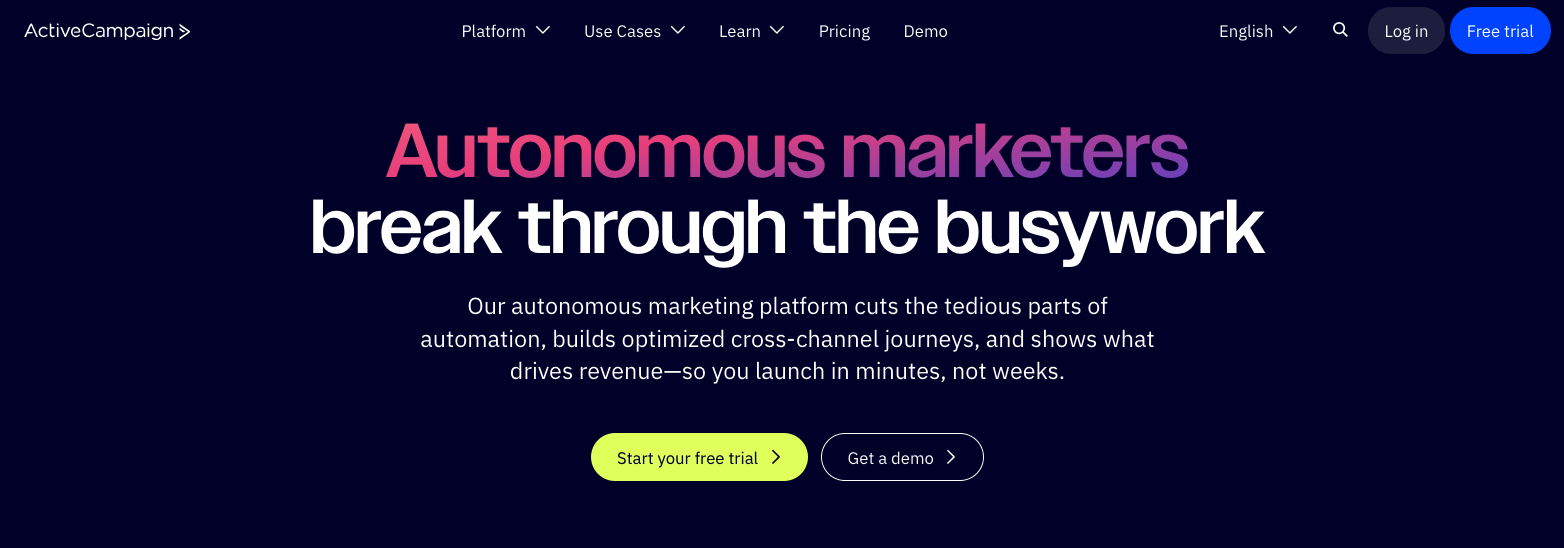
ActiveCampaign is best for SMBs needing sophisticated workflows tied to CRM and event tracking. It works well for both ecommerce and B2B models, though it may be overkill for very simple B2C stores that only need basic cart abandonment.
Standout Features
- Visual automation builder.
- Conditional splits.
- Lead scoring.
- Expanding AI features.
Channels and Integrations
- Email core plus SMS and WhatsApp options.
- Wide integrations with 900+ tools and platforms.
- Selection of plan tiers.
ActiveCampaign is one of the few tools that truly connects marketing and sales automation into one. Since it provides detailed customer tracking and strong CRM functions, it’s ideal for businesses that need precision and control.
5. Drip
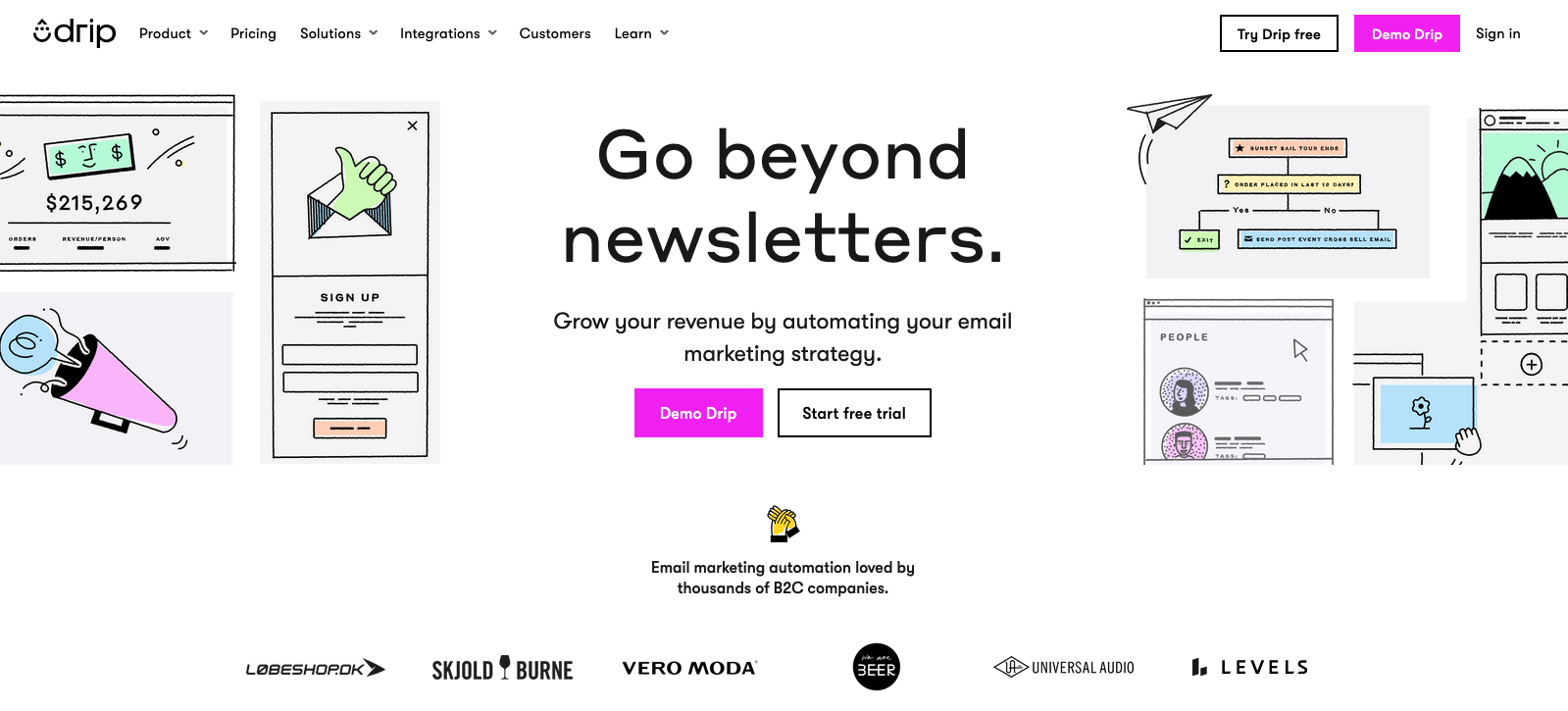
Drip is best for boutique DTC brands and creators selling online. It’s a great option for ecommerce-focused automation, especially with its segmentation capabilities.
Standout Features
- Ecommerce triggers.
- Simple workflow builder.
- Onsite forms and pop-ups.
- Tagging.
- Revenue tracking.
Channels and Integrations
- Email and onsite tools.
- Store sync for ecommerce platforms like Shopify, WooCommerce, and more.
Drip was built with an ecommerce-first mindset. It helps small brands run sophisticated marketing campaigns without needing enterprise-level software.
6. Brevo (Formerly Sendinblue)

Brevo is best for price-sensitive teams wanting email plus SMS/WhatsApp and basic CRM capabilities. It provides decent automation flows and doesn’t break your budget.
Standout Features
- Drag-and-drop automation editor.
- Transactional email capabilities.
- Growing CRM and push notification suite.
Channels and Integrations
- Email, SMS, WhatsApp, web/mobile push.
- Built-in CRM and chat.
- Integrates with most major ecommerce platforms and more.
Brevo gives you a multichannel system for a fraction of the cost compared to some more expensive alternatives. While it may lack some advanced functionalities, the built-in CRM and messaging capabilities may be an even better trade-off for some.
7. MailerLite

MailerLite is best for lean teams and creators needing fast and clean automations. It has a straightforward interface that’s easy to use and understand.
Standout Features
- Multi-trigger starts.
- Reordering steps.
- Quick previews.
- Manual adds.
Channels and Integrations
- Email core.
- Landing pages and forms included.
- Integrates with major ecommerce platforms and more.
MailerLite offers a great balance between power and simplicity. It’s easy to use but functional enough to achieve decent results. You can launch campaigns quickly and analyze clear performance data.
8. Kit
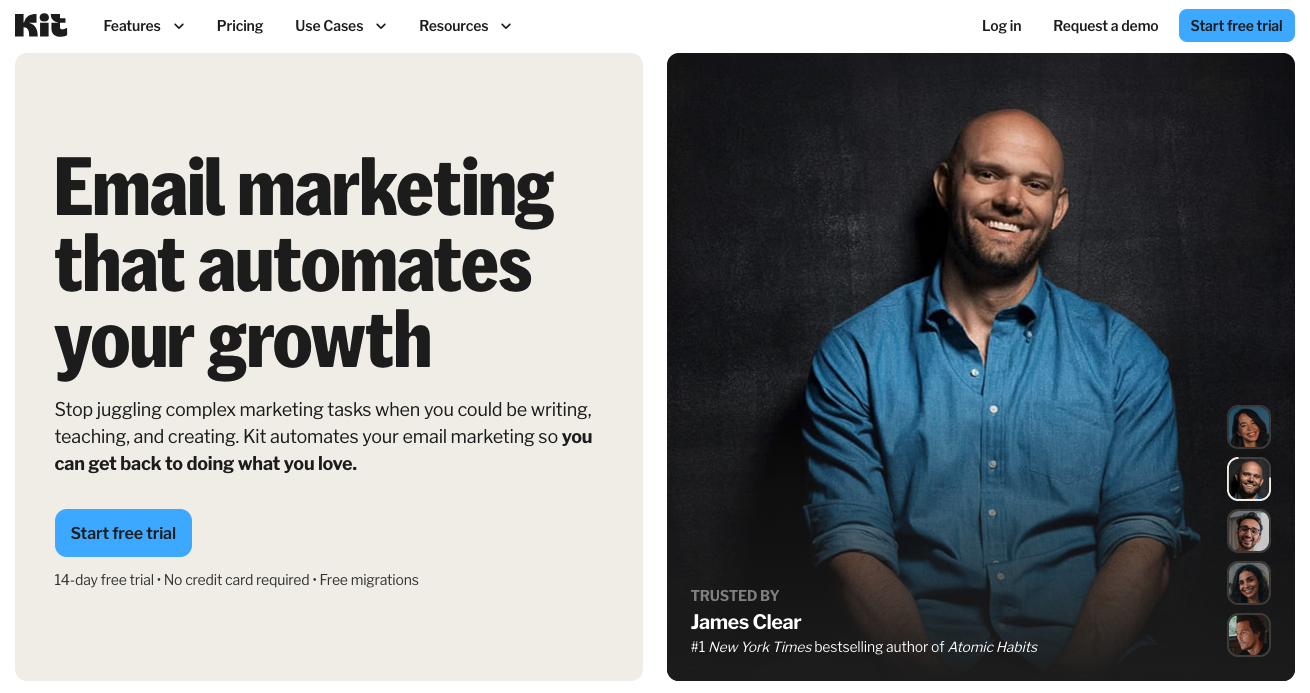
Kit is best for creators selling digital products, memberships, or courses. If you’re focusing on subscriptions, this tool may be your best way to go forward.
Standout Features
- Simple visual automations.
- Forms and landing pages.
- Creator recommendations.
- Built-in commerce.
Channels and Integrations
- Email core.
- Native sales components.
- Creator tools.
- Integrations with major ecommerce platforms and more.
Kit was designed mostly with creators in mind. As a result, it doesn’t include tech hurdles and allows you to focus on building relationships and selling your work.
9. GetResponse

GetResponse is best for SMBs wanting email plus landing pages, funnels, and webinars in one stack. It’s a more universal tool with more features, which is good for those who explicitly need them.
Standout Features
- Visual automation workflows.
- Autoresponders.
- AI email writing.
- Ecommerce triggers.
Channels and Integration
- Email core.
- Landing pages and forms.
- Webinars extend campaigns.
- Integrations with major ecommerce platforms and more.
GetResponse is great for businesses that want to centralize their tools and reduce software costs while keeping a decent performance.
Conclusion
The best email marketing automation tools are the ones that fit your needs to the dot. Just because a platform has lots of features, doesn’t necessarily mean it’s the one you need to go for. Paying for 100% of its capabilities and only using 60% is not the best decision.
For this reason, we encourage you to take your time and read up on several of these platforms. Try the free versions if they have it. Play around with the interface and automations. Once you find the one that feels right and meets your goals, that’s probably the best email automation tool for you.
Featured Image by Pixabay.
Share this post
Leave a comment
All comments are moderated. Spammy and bot submitted comments are deleted. Please submit the comments that are helpful to others, and we'll approve your comments. A comment that includes outbound link will only be approved if the content is relevant to the topic, and has some value to our readers.

Comments (0)
No comment